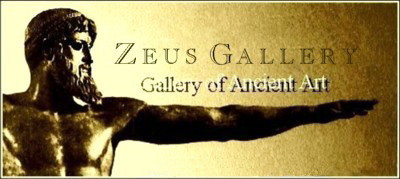| Ancient Roman Coin of MAXENTIUS CarthageMint
|
MAXENTIUS
307-312 AD
Maxentius, Latin in full Marcus Aurelius Valerius Maxentius. His father, the emperor Maximian, abdicated with Diocletian in 305. In the new tetrarchy (two augusti with a caesar under each) that was set up after these abdications, Maxentius was passed over in favour of Flavius Valerius Severus, who was made a caesar and then, in 306, an augustus. But discontent with the policies of Severus at Rome caused Maxentius to be proclaimed princeps there on October 28, 306, by the Praetorian Guard. In 307 he took the title augustus.
Maximian, recalled to the throne to support Maxentius, defeated and killed Severus in 307. In 308, however, father and son quarreled, and Maximian sought refuge with Constantine, who had been Maximian’s ally since Maximian married his daughter Fausta to Constantine and designated him augustus in 307. Maxentius at first controlled Italy and Africa but not Spain, which was controlled by Constantine. In 308 the vicar of Africa, Lucius Domitius Alexander, revolted and proclaimed himself augustus. Africa was recovered by Maxentius’s praetorian prefect, but Maxentius was killed by Constantine at the Battle of the Milvian Bridge in 312~at the gates of Rome where he found death by drowning in the Tiber.
On
the eve of the decisive battle of the Milvian bridge, Constantine was visited by an Angel while he
slept which showed him a Christogram (the first two letters of "Christ"
in Greek - Chi, Rho) and the Angel thus spoke:"IN HOC SIGNO VICTOR ERIS", meaning in Latin "In this sign [of Christ], you will be the victor."
Billon Follis. 8.61g. 29mm (a U.S. Quarter is 24mm 5.6g).
Carthage mint, Struck AD 307.
Obverse: IMP MAXENTIVS P F AVG.
Laureate head right.
Reverse: CONSERVATOR AFRICAE SVAE (translation: The Protectors/Defenders of their Africa); , Africa standing facing,head left in
long drapery, wearing elephant-skin headdress, holding Vexillum/Military standard
and elephant's tusk, lion with captured bull at foot left.
SE-F across fields. Mintmark B in exergue.
Very Fine, green and olive brown patina.
Ref. RIC VI Carthage 57; Sear 14998.
RIC
(Roman Imperial Coinage) is the general abbreviation for a set of 13
volumes of identification catalogs of Roman coins. RIC is the world
standard reference for Roman Imperial coins.
~~~~~~~~~~~~~~~~
OUR GUARANTEE:
All illustrations are of the actual item offered. The authenticity of all pieces is fully guaranteed. Any item ever shown otherwise may be returned unaltered for full refund less shipping.
Additionally, if any item purchased is not to your satisfaction you may return it unaltered within 30 days of purchase for a full refund less shipping. We also guarantee absolute discretion and confidentiality in all transactions.

Images are not actual size
Please see description for actual measurements.
| 



